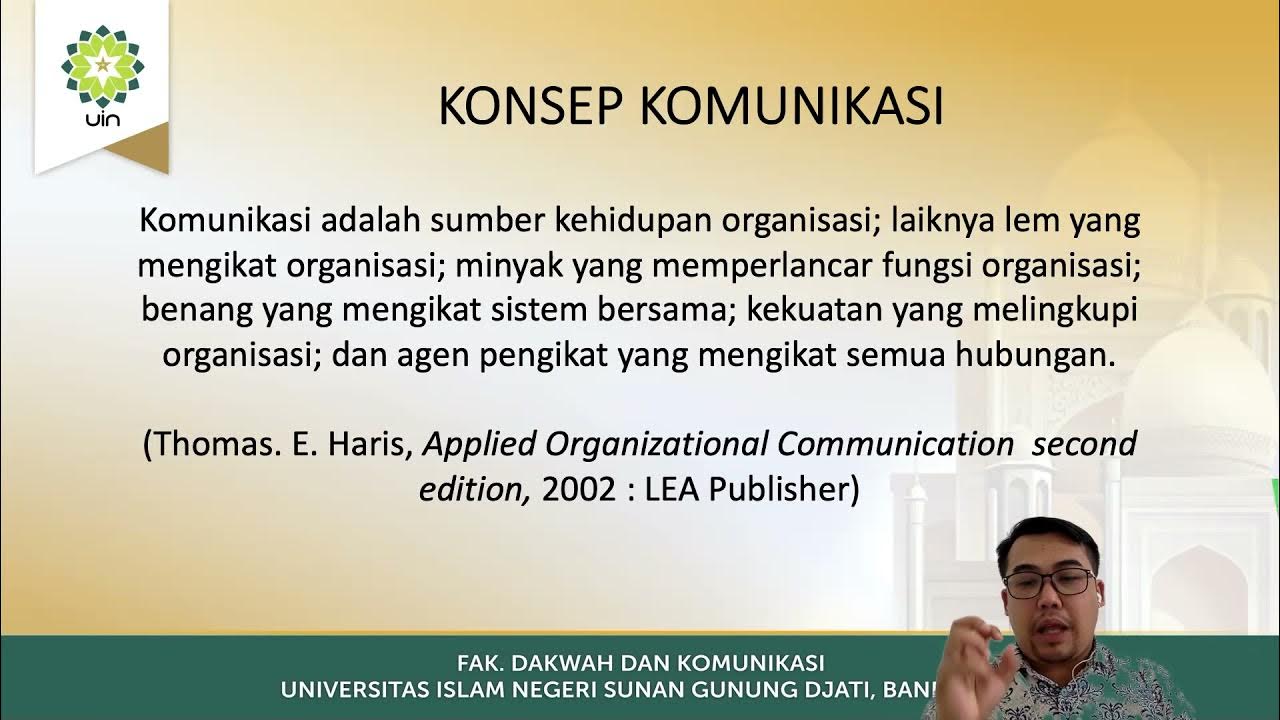What is Organizational Communication? (full version)
Summary
TLDRThe video explores organizational communication from two perspectives: the conventional view, which sees communication as a flow of information within organizations, and a more nuanced approach that perceives organizations themselves as constructs of communication. While the conventional view emphasizes efficiency and information transfer, the alternative perspective highlights the complexities of human interaction, including interpretation, social realities, and power dynamics. This deeper understanding challenges traditional assumptions and invites a critical examination of how organizations function, encouraging a more effective and equitable approach to communication that can lead to improved organizational outcomes.
Takeaways
- 😀 Organizational communication includes all forms of communication within organizations, such as emails, meetings, and presentations.
- 🤔 The conventional view of organizational communication treats organizations as containers for communication, which limits understanding of its complexities.
- 🔍 A more sophisticated approach sees organizations as communication, emphasizing that communication shapes social reality and organizational existence.
- 🛠️ Ineffective communication is often viewed as a technical problem, but it is essential to understand the deeper social processes involved.
- 💬 Human interaction involves not only information transfer but also meaning negotiation, context interpretation, and relationship dynamics.
- ⚖️ Organizations are not neutral structures; they are shaped by human activity, values, and power dynamics.
- 🌍 The conventional 'flat Earth' approach to communication fails to account for the complexities and nuances present in organizational life.
- 🧭 A constitutive view of communication allows for a critical examination of organizational structures, norms, and power dynamics.
- 📈 Understanding organizational communication as a social process can lead to more effective strategies for change, conflict resolution, and collaboration.
- 🔗 Studying organizational communication reveals how identities, values, and hidden power dynamics are created and sustained through communication practices.
Q & A
What is the primary focus of conventional organizational communication?
-The conventional view focuses on communication that occurs within organizations, such as emails, memos, meetings, and other interactions, viewing organizations as containers where communication flows.
How does the metaphor of a container relate to organizational communication?
-In the container metaphor, organizations are seen as physical or symbolic structures that shape how communication occurs, influencing how messages are transmitted based on hierarchy and organizational layout.
What challenges arise from the conventional approach to organizational communication?
-Challenges include miscommunication being viewed merely as technical problems, leading to issues in operations if the right information does not reach the right people.
What is meant by the 'constitutive view' of communication?
-The constitutive view suggests that communication is not just about transmitting information; it actively shapes social realities and constructs the very essence of organizations through ongoing interactions and interpretations.
Why is it important to consider the complexities of communication in organizations?
-Understanding the complexities is crucial because communication involves more than just exchanging information; it includes negotiating meanings and dealing with factors like power dynamics, cultural differences, and social contexts.
What is the 'Flat Earth approach' mentioned in the transcript?
-The 'Flat Earth approach' refers to a limited perspective on communication that works for routine interactions but fails to account for the complexities in more nuanced situations, akin to the outdated belief that the Earth is flat.
How does the sophisticated view of organizational communication improve research and practice?
-This view encourages researchers to investigate how specific communication practices influence organizational outcomes, revealing hidden dynamics of power and identity, and promoting more equitable and innovative organizational practices.
What role does context play in organizational communication according to the transcript?
-Context plays a critical role because the meaning of messages can change based on situational factors, and understanding these nuances is essential for effective communication and organizational functioning.
What implications does the constitutive view of communication have for organizational change?
-The constitutive view highlights that communication processes shape perceptions and realities within organizations, making it essential to consider these dynamics when implementing changes or addressing conflicts.
Why is a deeper understanding of organizational communication beneficial?
-A deeper understanding enables organizations to address the complexities of human interactions, fostering environments that encourage collaboration, innovation, and effective conflict resolution, ultimately leading to better organizational outcomes.
Outlines

This section is available to paid users only. Please upgrade to access this part.
Upgrade NowMindmap

This section is available to paid users only. Please upgrade to access this part.
Upgrade NowKeywords

This section is available to paid users only. Please upgrade to access this part.
Upgrade NowHighlights

This section is available to paid users only. Please upgrade to access this part.
Upgrade NowTranscripts

This section is available to paid users only. Please upgrade to access this part.
Upgrade Now5.0 / 5 (0 votes)





